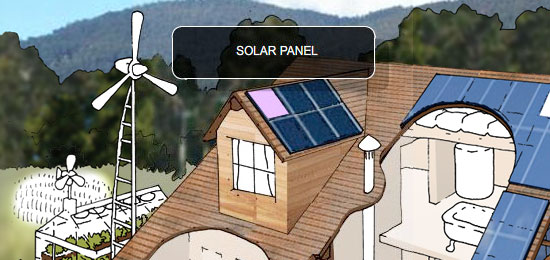Solar panels are easy to install, and they have no moving parts. Feed-in Tariff payments can make them a good financial investment.
Photovoltaic Solar Panels convert Photon particles from the sun directly into electricity as opposed to Solar Thermal Collectors which generally heat water or another such liquid. Photovoltaic solar panels are useful to households that require electricity to provide lighting, charge electrical equipment or to power appliances.
A solar panel (or photovoltaic array) is an installation of photovoltaic modules (interconnected assembly of photovoltaic cells, also known as solar cells). Photovoltaic cells typically require protection from the environment.
For cost and practicality reasons a number of cells are connected electrically and packaged in a photovoltaic module, while a collection of these modules that are mechanically fastened together, wired, and designed to be a field-installable unit, sometimes with a glass covering and a frame and backing made of metal, plastic or fiberglass, are known as a photovoltaic panel or simply solar panel. A photovoltaic installation typically includes an array of photovoltaic modules or panels, an inverter, batteries (for off grid) and interconnection wiring.
Typical domestic systems are around 2.2 kW in size, and can provide around 1,850 kWh a year. This is over 40% of the electricity used by a typical household.
The Energy Saving Trust provides the following advice for householders considering investing in solar panels.
Installed cost
A typical 2.2 kWp domestic system will cost around £12,500, or £5,000 – £7,600 per kWp installed.
Grants available
Call the Energy Saving Trust on 0800 512 012 for details of any local support available.
Other financial
Eligible for Feed-in Tariffs payments – see Government Incentives support section. For more information visit energysavingtrust.org.uk
Running costs
None.
Savings
A typical 2.2 kWp system could generate savings and income of £920. Includes FITs payments.
Maintenance
Once installed and commissioned, limited maintenance is required. The inverter may need replacing after 8–10 years.
Space issues
You need a large area of unshaded roof or other appropriate space – typically about 15 square metres – facing somewhere between south east and south west.
Energy availability
Limited electricity provided in winter; most electricity is provided in summer. Planning issues
Planning is now permitted but with exceptions and limitations. Contact your local planning office for full details.
Installer issues
Choose an installer certified under the Microgeneration Certification Scheme – see microgenerationcertification.org Check the installer is a member of the REAL Assurance Scheme visit realassurance.org.uk for more information.
CO2 emissions
A 2.2 kWp system will typically save around 1 tonne of CO2 per year in the UK.
Other issues
Panels can be heavy, so check that the roof can accommodate the additional weight. Partial shading of an array can affect output significantly.
1